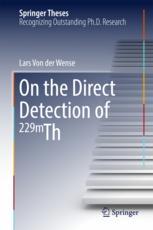

Most ebook files are in PDF format, so you can easily read them using various software such as Foxit Reader or directly on the Google Chrome browser.
Some ebook files are released by publishers in other formats such as .awz, .mobi, .epub, .fb2, etc. You may need to install specific software to read these formats on mobile/PC, such as Calibre.
Please read the tutorial at this link: https://ebookbell.com/faq
We offer FREE conversion to the popular formats you request; however, this may take some time. Therefore, right after payment, please email us, and we will try to provide the service as quickly as possible.
For some exceptional file formats or broken links (if any), please refrain from opening any disputes. Instead, email us first, and we will try to assist within a maximum of 6 hours.
EbookBell Team

4.4
22 reviewsThis thesis describes the first detection of a nuclear transition that had been sought for 40 years, and marks the essential first step toward developing nuclear clocks.
Atomic clocks are currently the most reliable timekeepers. Still, they could potentially be outperformed by nuclear clocks, based on a nuclear transition instead of the atomic transitions employed to date. An elusive, extraordinary state in thorium-229 seems to be the only nuclear transition suitable for this purpose and feasible using currently available technology. Despite repeated efforts over the past 40 years, until recently we had not yet successfully detected the decay of this elusive state.
Addressing this gap, the thesis lays the foundation for the development of a new, better frequency standard, which will likely have numerous applications in satellite navigation and rapid data transfer. Further, it makes it possible to improve the constraints for time variations of fundamental constants and opens up the field of nuclear coherent control.